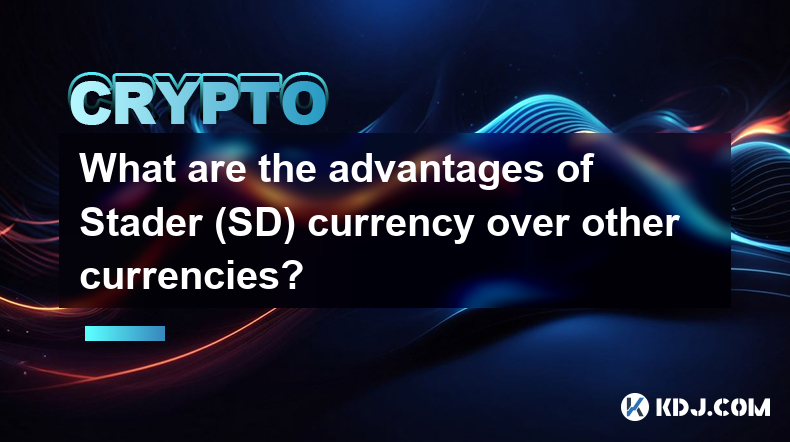-
 Bitcoin
Bitcoin $107,770.4059
-1.97% -
 Ethereum
Ethereum $2,493.7356
-3.93% -
 Tether USDt
Tether USDt $1.0002
-0.02% -
 XRP
XRP $2.2203
-2.55% -
 BNB
BNB $652.1421
-1.54% -
 Solana
Solana $146.9193
-3.62% -
 USDC
USDC $1.0002
0.02% -
 TRON
TRON $0.2838
-0.55% -
 Dogecoin
Dogecoin $0.1628
-5.62% -
 Cardano
Cardano $0.5703
-4.75% -
 Hyperliquid
Hyperliquid $38.6498
-4.85% -
 Sui
Sui $2.8450
-5.48% -
 Bitcoin Cash
Bitcoin Cash $489.1135
-1.87% -
 Chainlink
Chainlink $13.0730
-4.91% -
 UNUS SED LEO
UNUS SED LEO $9.0733
0.42% -
 Avalanche
Avalanche $17.7084
-4.89% -
 Stellar
Stellar $0.2381
-2.40% -
 Toncoin
Toncoin $2.7521
-3.88% -
 Shiba Inu
Shiba Inu $0.0...01134
-4.70% -
 Litecoin
Litecoin $86.6015
-3.52% -
 Hedera
Hedera $0.1529
-4.15% -
 Monero
Monero $314.6637
-0.97% -
 Dai
Dai $0.9999
-0.01% -
 Polkadot
Polkadot $3.3457
-5.84% -
 Ethena USDe
Ethena USDe $1.0001
-0.01% -
 Bitget Token
Bitget Token $4.3968
-3.94% -
 Uniswap
Uniswap $6.9333
-9.10% -
 Pepe
Pepe $0.0...09620
-5.08% -
 Aave
Aave $264.0087
-5.99% -
 Pi
Pi $0.4674
-4.92%
What are the advantages of Stader (SD) currency over other currencies?
Stader's decentralized platform offers multi-chain staking with advanced strategies, low fees, transparent pricing, and a thriving community, empowering users with secure and optimized staking opportunities.
Jan 07, 2025 at 04:27 pm

Key Points:
- Decentralized Staking Platform: Stader provides a decentralized staking platform that allows users to stake their assets without the need for third-party custodians or exchanges. This eliminates counterparty risks and provides enhanced security.
- Multi-Chain Support: Stader supports staking for various popular blockchain networks, including Ethereum, Solana, Polkadot, Polygon, Cosmos, and Binance Smart Chain. This wide support allows users to diversify their staking portfolio across multiple ecosystems.
- Advanced Staking Strategies: Stader offers advanced staking strategies that optimize returns for users. These strategies include auto-compounding, dollar-cost averaging, and yield farming.
- Low Fees and Transparent Pricing: Stader charges competitive fees for its services and provides transparent pricing without hidden charges. Users can clearly understand the costs involved in staking their assets.
- Community Participation: Stader has an active community of users and developers who contribute to the platform's growth and development. This strong community support fosters innovation and drives the project forward.
Advantages of Stader (SD) Currency
Decentralized Staking:
- Stader's decentralized staking platform empowers users to retain control over their assets, eliminating the risk of centralized entities holding their funds.
- This decentralized approach promotes transparency, accountability, and security, as users do not have to trust third parties with their digital assets.
- The platform's non-custodial nature ensures that users maintain full ownership of their staked assets and can withdraw them at any time without intermediaries.
Multi-Chain Support:
- Stader's support for multiple blockchain networks provides users with a wide range of staking options.
- This flexibility allows users to capitalize on the advantages of various ecosystems and diversify their staking portfolio across different blockchains.
- The multi-chain support enables users to access a broader range of staking rewards and opportunities, increasing their earning potential.
Advanced Staking Strategies:
- Stader offers advanced staking strategies that generate optimized returns for users.
- These strategies leverage automation, dollar-cost averaging, and yield farming to maximize rewards while minimizing risks.
- By automating the staking process, Stader frees up users' time and resources, allowing them to focus on other aspects of their digital asset management.
Low Fees and Transparent Pricing:
- Stader's competitive fees and transparent pricing make it an attractive option for stakers.
- The platform's straightforward fee structure provides users with clear and upfront information about the costs involved in staking.
- Transparent pricing eliminates hidden charges, ensuring users can accurately calculate their expected returns.
Community Participation:
- Stader's active community of users and developers contributes significantly to the platform's growth and development.
- Community members participate in governance decisions, share knowledge and insights, and collaborate on new initiatives.
- This community engagement fosters a sense of ownership and drives the project forward, benefiting all stakeholders involved.
FAQs
- What is the Stader (SD) token?
The Stader (SD) token is the native utility token of the Stader platform. It is used for governance, staking rewards, and accessing exclusive features and benefits within the Stader ecosystem. - How can I acquire SD tokens?
SD tokens can be purchased on various cryptocurrency exchanges, including Binance, KuCoin, and Huobi. Additionally, users can earn SD tokens as rewards for staking their assets on the Stader platform. - What are the benefits of holding SD tokens?
Holding SD tokens entitles users to various benefits, including voting rights on governance proposals, increased staking rewards, and access to exclusive features and services on the Stader platform. - How is Stader different from other cryptocurrencies?
Stader distinguishes itself by offering a decentralized staking platform, multi-chain support, advanced staking strategies, low fees, transparent pricing, and a strong community. These features collectively make Stader a compelling choice for users seeking secure, accessible, and efficient staking opportunities. - Does Stader support staking rewards for staked SD tokens?
Yes, Stader rewards users with SD tokens for staking their assets on the platform. This incentivizes users to participate in staking and contributes to the security and stability of the Stader ecosystem.
Disclaimer:info@kdj.com
The information provided is not trading advice. kdj.com does not assume any responsibility for any investments made based on the information provided in this article. Cryptocurrencies are highly volatile and it is highly recommended that you invest with caution after thorough research!
If you believe that the content used on this website infringes your copyright, please contact us immediately (info@kdj.com) and we will delete it promptly.
- Bitcoin's Pattern Break: Are HODLers the Key to the Next Surge?
- 2025-07-04 18:50:12
- Bitcoin Price, Trump's Bill, and the $150K Dream: A NYC Take
- 2025-07-04 19:50:12
- Ethereum, LILPEPE, and the July Bounce: Will Pepe Steal ETH's Thunder?
- 2025-07-04 19:10:12
- Binance Institutional Loans: Unlocking 4x Leverage and Zero Interest for Whales
- 2025-07-04 19:15:12
- Bitcoin Bull Run: Analysts Eye Peak in Late 2025?
- 2025-07-04 19:20:13
- Pepe Indicators, Bullish Forecast: Can the Meme Coin Rally?
- 2025-07-04 19:25:12
Related knowledge

How to customize USDT TRC20 mining fees? Flexible adjustment tutorial
Jun 13,2025 at 01:42am
Understanding USDT TRC20 Mining FeesMining fees on the TRON (TRC20) network are essential for processing transactions. Unlike Bitcoin or Ethereum, where miners directly validate transactions, TRON uses a delegated proof-of-stake (DPoS) mechanism. However, users still need to pay bandwidth and energy fees, which are collectively referred to as 'mining fe...

USDT TRC20 transaction is stuck? Solution summary
Jun 14,2025 at 11:15pm
Understanding USDT TRC20 TransactionsWhen users mention that a USDT TRC20 transaction is stuck, they typically refer to a situation where the transfer of Tether (USDT) on the TRON blockchain has not been confirmed for an extended period. This issue may arise due to various reasons such as network congestion, insufficient transaction fees, or wallet-rela...

How to cancel USDT TRC20 unconfirmed transactions? Operation guide
Jun 13,2025 at 11:01pm
Understanding USDT TRC20 Unconfirmed TransactionsWhen dealing with USDT TRC20 transactions, it’s crucial to understand what an unconfirmed transaction means. An unconfirmed transaction is one that has been broadcasted to the blockchain network but hasn’t yet been included in a block. This typically occurs due to low transaction fees or network congestio...

How to check USDT TRC20 balance? Introduction to multiple query methods
Jun 21,2025 at 02:42am
Understanding USDT TRC20 and Its ImportanceUSDT (Tether) is one of the most widely used stablecoins in the cryptocurrency market. It exists on multiple blockchain networks, including TRC20, which operates on the Tron (TRX) network. Checking your USDT TRC20 balance accurately is crucial for users who hold or transact with this asset. Whether you're sendi...

What to do if USDT TRC20 transfers are congested? Speed up trading skills
Jun 13,2025 at 09:56am
Understanding USDT TRC20 Transfer CongestionWhen transferring USDT TRC20, users may occasionally experience delays or congestion. This typically occurs due to network overload on the TRON blockchain, which hosts the TRC20 version of Tether. Unlike the ERC20 variant (which runs on Ethereum), TRC20 transactions are generally faster and cheaper, but during...

The relationship between USDT TRC20 and TRON chain: technical background analysis
Jun 12,2025 at 01:28pm
What is USDT TRC20?USDT TRC20 refers to the Tether (USDT) token issued on the TRON blockchain using the TRC-20 standard. Unlike the more commonly known ERC-20 version of USDT (which runs on Ethereum), the TRC-20 variant leverages the TRON network's infrastructure for faster and cheaper transactions. The emergence of this version came as part of Tether’s...

How to customize USDT TRC20 mining fees? Flexible adjustment tutorial
Jun 13,2025 at 01:42am
Understanding USDT TRC20 Mining FeesMining fees on the TRON (TRC20) network are essential for processing transactions. Unlike Bitcoin or Ethereum, where miners directly validate transactions, TRON uses a delegated proof-of-stake (DPoS) mechanism. However, users still need to pay bandwidth and energy fees, which are collectively referred to as 'mining fe...

USDT TRC20 transaction is stuck? Solution summary
Jun 14,2025 at 11:15pm
Understanding USDT TRC20 TransactionsWhen users mention that a USDT TRC20 transaction is stuck, they typically refer to a situation where the transfer of Tether (USDT) on the TRON blockchain has not been confirmed for an extended period. This issue may arise due to various reasons such as network congestion, insufficient transaction fees, or wallet-rela...

How to cancel USDT TRC20 unconfirmed transactions? Operation guide
Jun 13,2025 at 11:01pm
Understanding USDT TRC20 Unconfirmed TransactionsWhen dealing with USDT TRC20 transactions, it’s crucial to understand what an unconfirmed transaction means. An unconfirmed transaction is one that has been broadcasted to the blockchain network but hasn’t yet been included in a block. This typically occurs due to low transaction fees or network congestio...

How to check USDT TRC20 balance? Introduction to multiple query methods
Jun 21,2025 at 02:42am
Understanding USDT TRC20 and Its ImportanceUSDT (Tether) is one of the most widely used stablecoins in the cryptocurrency market. It exists on multiple blockchain networks, including TRC20, which operates on the Tron (TRX) network. Checking your USDT TRC20 balance accurately is crucial for users who hold or transact with this asset. Whether you're sendi...

What to do if USDT TRC20 transfers are congested? Speed up trading skills
Jun 13,2025 at 09:56am
Understanding USDT TRC20 Transfer CongestionWhen transferring USDT TRC20, users may occasionally experience delays or congestion. This typically occurs due to network overload on the TRON blockchain, which hosts the TRC20 version of Tether. Unlike the ERC20 variant (which runs on Ethereum), TRC20 transactions are generally faster and cheaper, but during...

The relationship between USDT TRC20 and TRON chain: technical background analysis
Jun 12,2025 at 01:28pm
What is USDT TRC20?USDT TRC20 refers to the Tether (USDT) token issued on the TRON blockchain using the TRC-20 standard. Unlike the more commonly known ERC-20 version of USDT (which runs on Ethereum), the TRC-20 variant leverages the TRON network's infrastructure for faster and cheaper transactions. The emergence of this version came as part of Tether’s...
See all articles

























































































